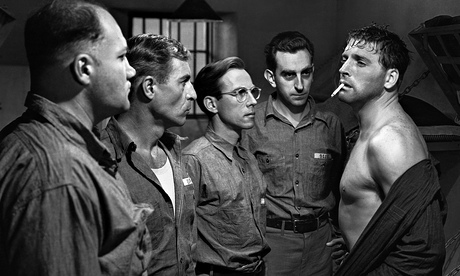
Prisons as places of detention and reformation were the creation of American idealism, the first established in the late 18th century by Pennsylvania Quakers. The prison movie began with the seminal The Big House (1930), which gave the genre its name (derived from underworld slang), its dramatis personae, its enduring themes of incarceration, injustice and freedom and its central image of jail as a symbol of society itself. Brute Force, a classic example of the genre, was the second film of Burt Lancaster, who was to spend his movie career in and out of prison uniform, and his performance as the dynamic leader of a jailbreak at the horrendous Westgate penitentiary confirmed the commanding star presence he’d shown in his debut, The Killers.
The film was made in that brief period between the end of the second world war and the ascendancy in 1948 of the House Un-American Activities Committee and McCarthyism, when Hollywood made outspokenly liberal films that attacked racism, antisemitism, neo-Nazism, vigilantism and the misuse of the criminal justice system. Brute Force specifically attacks the overcrowded, underfunded Westgate and its failure to provide rewarding work for inmates turning the place into “one big human bomb ready to explode”. The decent warden is at the end of his tether, the jail is run by the reptilian Captain Munsey (Hume Cronyn), a fascistic, Wagner-loving sadist, and the spokesman for liberal society, the prison doctor, is a fatalistic alcoholic.
The violence is relentless, the staff divide and rule by using stool pigeons (much is made of the role of informers), and there are brief, unintentionally misogynistic flashbacks to the lives of four prisoners that both humanise and sentimentalise them. The outstanding photography (more grisaille than stark black and white) is the work of William Daniels, once Garbo’s favourite cameraman, the score is by Miklós Rósza, a great noir composer, and it’s the penultimate movie of producer Mark Hellinger, a syndicated New York columnist who took pride in his friendships with celebrated criminals. (The Producer, a novel by Richard Brooks, the film’s screenwriter, was based on Hellinger.) Brute Force was the first important assignment of leftwing director Jules Dassin: he and four of the film’s supporting actors were to be blacklisted after refusing to testify before the House Un-American Activities Committee.

